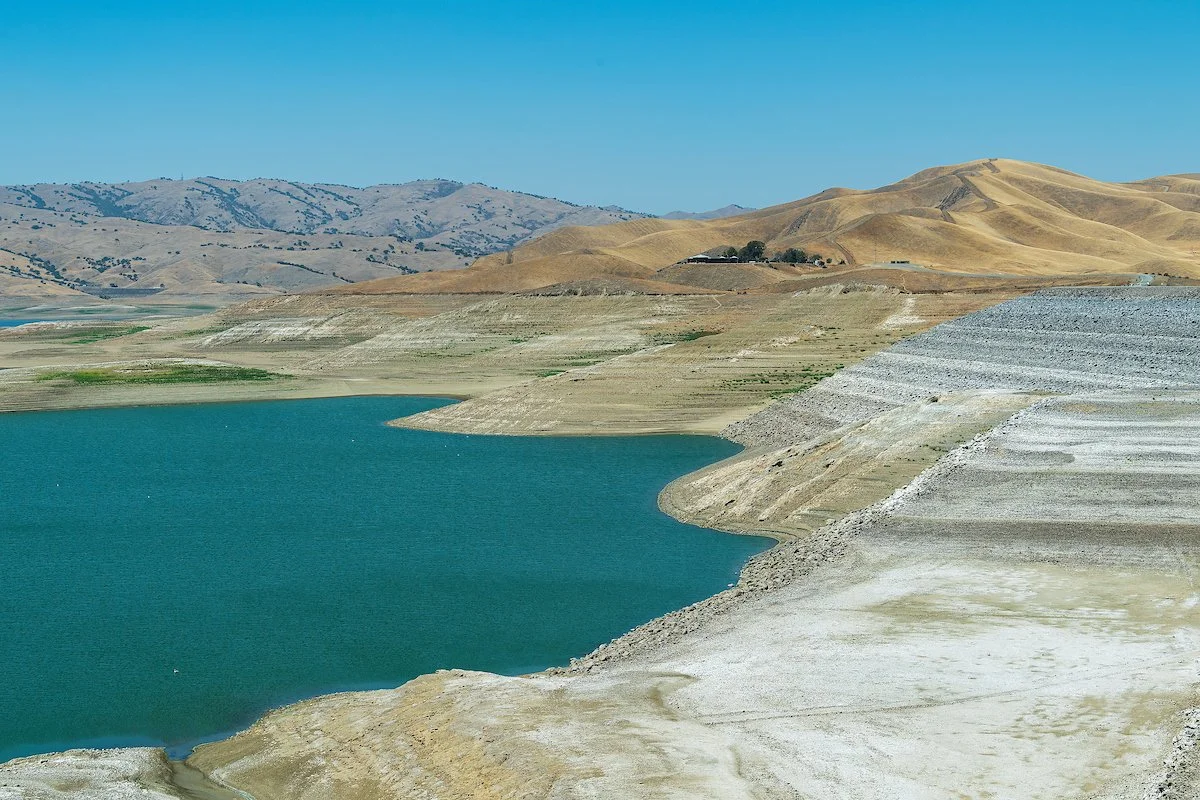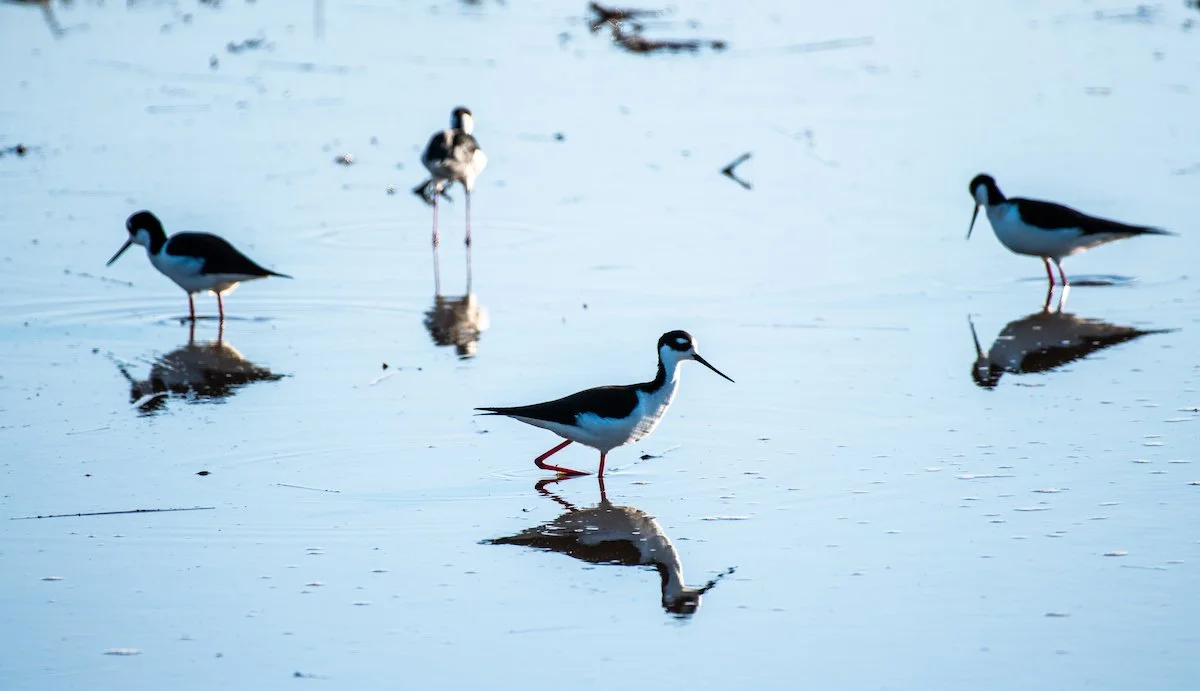The End is in Sight for the Bay Delta Plan Update — and Maybe the Delta
San Luis Reservoir in Merced County at a time of relatively low water levels. August 10, 2021. Credit: Andrew Innerarity, CA Dept. of Water Resources.
After 15 years, the State Water Board is entering what could be the final year of its update of the water quality standards for the Bay-Delta estuary and watershed – but the warning signs that it will make the wrong decision are flashing.
As we move into 2025, the latest round of the seemingly never ending process to update the badly outdated water quality standards for the San Francisco Bay-Delta estuary and its vast Central Valley watershed is playing out – thirty years after the last complete overhaul of these critical protections for fish and wildlife, and the river flows that sustain them; twenty years since it was universally acknowledged they needed to be strengthened to reverse the decline of the Bay-Delta ecosystem; and fifteen years after the update process was kicked off.
One of the highest priorities at Friends of the River is to push state regulators to finally take strong and clear action to update the standards, improve river flow to the estuary, and reverse the decline of the Bay-Delta ecosystem.
The State Water Resources Control Board, which is charged with implementing and enforcing the requirements of the state and federal Clean Water Acts (the latter as a delegation from the US Environmental Protection Agency), is still at least a year away from completing its decade-and-a-half-long update of the Bay-Delta Water Quality Control Plan (Plan). The Plan sets legally enforceable requirements for freshwater flow from the Sacramento and San Joaquin Valleys into the Sacramento-San Joaquin Delta. It also sets standards for flow and diversion conditions within the Delta, flow from the Delta to San Francisco Bay, as well as other water quality parameters.
The Board last updated the standards for the Sacramento Valley and Bay-Delta portions of the estuary in 1995; it required more inflow from the San Joaquin Valley in 2018 but has yet to implement its decision (responsibility by individual water districts and agencies for meeting water quality standards must be determined by the Board through a separate water rights decision-making process).
Black-necked stilts forage for food in the Delta near Lodi, California. January 25, 2019. Credit: Florence Low, CA Dept. of Water Resources
The Board has been aware that the 1995 standards were failing to prevent the decline of fish and wildlife populations and the degradation of habitat and water quality since the collapse of native fish populations in the mid-2000s and began the current update process in 2009 (with the intent of an original end date of 2012). A 2010 analysis by the Board (mandated by the California legislature in the Delta Reform Act of 2009) reviewed the extensive scientific record documenting the strong, persistent and significant relationship between flow and native species population viability and concluded that allowing 75% of the unimpaired flow in the Central Valley watershed (the runoff that would occur without dams and diversions) to reach the Bay would fully protect the estuary ecosystem, including at least 60% of the runoff from the San Joaquin River system. After “balancing” between fish and wildlife protection and consumptive uses of water by people for irrigation and development as part of its update process, in 2018 the Board adopted a requirement that 40% of San Joaquin runoff reach the Delta and is now proposing that 55% of Sacramento Valley runoff reach the Delta and Bay. Sort of.
Why is the Board’s update taking so long? – Especially since the best available science is so clear that major improvements in the amount and timing of flow are essential to maintain the health of native species and ecosystems, and the people who depend on them. And why should we describe the proposed 55% standard as “sort of”? Because Governor Newsom and his predecessors have instead bought into an alternative scheme known as the Voluntary Agreements or VAs (although the Administration prefers to call it “Healthy Rivers and Landscapes”, which brings to mind Voltaire’s famous observation that the Holy Roman Empire was neither holy, nor Roman, nor an empire…).
The state has been negotiating with large water districts for over a decade on an approach that would largely forego the needed increase in flows, instead focusing on habitat projects. The Newsom Administration has repeatedly pressured the Board to delay the Bay-Delta Plan update and its implementation in order to give the VA parties time to complete their negotiations (which is ironic, given that VA proponents often make the case that voluntary agreements will speed up implementation compared to the regulatory process).
When the Board released its draft analysis of the proposed new Sacramento-Delta standards in 2023, it “forgot” to include the Program of Implementation (POI) that is legally required to show how the new standards will be achieved – because the VA parties weren’t ready. Late last year the Board finally issued the draft POI, which describes a Byzantine approach under which the Plan could include one set of regulations for the VA parties and another set for everyone else.
The Delta is a diverse landscape of ecosystems and human uses. Pictured here, the Dutch Slough Tidal Marsh Restoration Project site, located in the Sacramento-San Joaquin Delta near Oakley, will restore 1,187 acres of tidal marsh habitat. Credit: Florence Low, CA Dept. of Water Resources.
Friends of the River’s engagement in the Bay-Delta Plan grew exponentially in 2024 with the addition to FOR staff of a team of scientists and policy experts from the Bay Institute who played central roles in the Plan update, building an extensive scientific record supporting the case for improving river flows. Now FOR is focusing on showing how the proposed VAs would not only utterly fail to protect the Bay-Delta ecosystem, but that adopting them would flagrantly violate state and federal law. FOR and its allies prepared an extensive legal analysis showing that:
the Board cannot adopt a separate set of requirements for VA parties that would fail to achieve the regulatory set of requirements that it would impose on everyone else,
and that the Board’s own science shows is necessary to comply with the Board’s responsibility to protect fish and wildlife beneficial uses of water,
and that these “voluntary” commitments would be difficult to enforce or to change as new information becomes available.
FOR has also been working to show how new, stronger flow requirements can be implemented effectively and efficiently, based on work done over the past few years with the Bureau of Reclamation to model a high-flow alternative for the analysis of changes to the Endangered Species Act permits for the Central Valley Project and the State Water Project that demonstrated decisively that large-scale increases in river flows were the only effective way to improve native species viability. (In contrast, the Voluntary Agreements would maintain or even worsen the status quo. Nonetheless, Reclamation and the state chose the VA alternative instead, unfortunately, and FOR is challenging the state’s decision).
FOR River Restoration Hydrologist Greg Reis has been testifying at the Board’s December and January workshops on the Program of Implementation and meeting with Board staff to make the case for how to best implement the percent of unimpaired flow approach and to critique the VA approach accounting for its supposed flow improvements.
Greg Reis, FOR’s River Restoration Hydrologist, providing testimony to the Water Board on issues with the VA flow accounting, December 13, 2024. Panelists include (left to right): Chris Shutes (CSPA), Greg Reis (FOR), Barry Nelson (GSSA), and Aaron Zettler-Mann (SYRCL).
Getting the update right and setting strong new standards is important to more than just ending the current unsustainable state of water use and management, where over half the average annual runoff in the watershed is diverted before it reaches the Bay. The rules in the updated Plan will also set the boundaries for how much water – if any – can be safely diverted by the many pending projects that propose to take even more water, like the Delta Conveyance Project (the tunnel version of the old Peripheral Canal) or Sites Reservoir. Over the coming year FOR will be working to steer the Board off the VA course toward extinction and toward an update that actually provides a sustainable foundation for the future health of the Bay-Delta system. Stay tuned.




